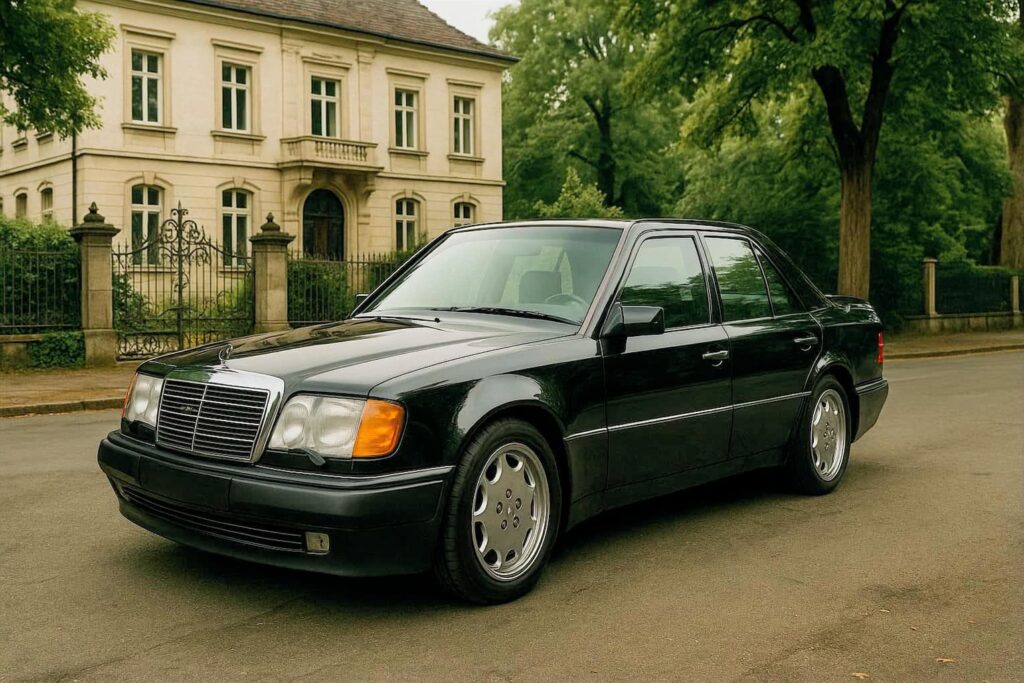Importing a vehicle from Germany to the US is often more than just a transaction. It involves technical compliance, customs clearance, international shipping, and precise coordination between buyer, seller, and the logistics partner. If you’re planning to import car from Germany to US, your experience will depend heavily on the service provider you choose and how well you understand the legal and logistical route ahead.
How to import a car to the US when it’s manufactured overseas?
The process begins by determining if the vehicle meets US federal standards. A car built for the German or European market must comply with the rules set by the Environmental Protection Agency (EPA) and the Department of Transportation (DOT). Cars that are 25 years or older are exempt from many of these rules, which makes classic German models an appealing option for collectors. Authorities require modifications to modern vehicles before release if they do not meet conformity standards. Once eligible, the next step is to acquire a bill of sale, title, and EPA/DOT compliance documentation to prepare for customs entry.

How much to ship a car from Germany to USA by shipping method?
Several key factors determine international auto transport rates, including the distance from the seller to the departure port, the chosen shipping method—container or roll-on/roll-off (RORO)—and the port of entry in the United States. To know how much to ship a car from Germany to USA, it’s best to request a tailored quote. On average, pricing ranges between $1,200 and $3,000 based on configuration. Insurance, loading, and inland trucking add to the total. Choosing a company that provides both freight and paperwork assistance will help reduce hidden costs and potential delays.
Why many use car import services when dealing with German vehicle imports?
Reputable partners with years of experience understand local port protocols and pre-export inspection requirements. LIMA Automotive Industries offers full-service handling, from arranging pre-purchase inspections in Germany to ensuring US customs forms are completed correctly. Their support extends to vehicle tracking, inland trucking, customs brokerage, and safe delivery. Having a single point of contact keeps the entire process simple and avoids common mistakes when importing into the US from a foreign country.

What to expect during customs clearance when you need to import car from Germany to US?
All incoming vehicles must pass through US Customs and Border Protection. The paperwork includes EPA Form 3520-1, DOT Form HS-7, bill of lading, bill of sale, and the foreign registration. Importers must file an International Transaction Number (ITN) in advance through the Automated Export System (AES). When the vehicle arrives at port, authorities may perform inspections. If the car is non-compliant and not exempt, they will deny release unless a registered importer oversees the necessary modifications.
Understanding how to import a car to US efficiently depends on timing, documentation, and support
The success of your import timeline often comes down to preparation. If you’re wondering how to import a car to US with minimal delays, begin with the eligibility assessment. Once that’s confirmed, hire a freight-forwarder familiar with EU-to-US imports. Many importers rely on LIMA Automotive for both shipping logistics and even door to door delivery. Their agents coordinate everything from port pickup to final delivery. This reduces errors and avoids vehicle holds.

Inspection before export is a critical step for buyers unsure of the car’s real condition
Before the car is transported, it’s recommended to get a third-party inspection done. These pre-purchase inspections check for mechanical condition, frame damage, rust, and title authenticity. If you’re buying from an auction or private seller and you are planning on shipping a car from Germany to USA, LIMA Automotive provides a pre-shipping inspection. This step helps prevent unpleasant surprises once the car is already on the ship and en route.
Common mistakes buyers make and how to avoid them
One of the frequent errors made is ignoring EPA or DOT conformity checks. Another is underestimating port charges or shipping insurance. Buyers sometimes fail to request photos of the chassis number and engine bay, which delays customs entry. Incorrect or missing paperwork can result in the vehicle being held or returned. Using a company with integrated services and legal review minimizes these risks significantly.

Why timing is important and what port to choose when you import a vehicle?
Lead time plays a big role. Booking freight during peak periods can delay vessel availability. US entry ports like Baltimore, New York, and Houston often handle high volumes of European imports. Choosing the right destination port depends on your proximity and how quickly you want the car delivered inland. Booking early also gives your logistics provider more flexibility with vessel selection and customs scheduling.
Closing steps and delivery to your driveway complete the process
Once customs officials complete clearance and receive payment for duties, they release the car. Bonded carriers can then arrange inland shipping from the port to your home or garage. Some companies offer enclosed trailer options for added protection. Final delivery typically occurs within a few days, depending on your location and carrier availability. The car will arrive with a temporary US entry document, allowing you to register it locally.
Working with LIMA Automotive ensures that every stage of your import runs smoothly
When you import car from Germany to US, it is rewarding especially if handled correctly. The team at LIMA Automotive Industries provides trusted experience and global partnerships. Their services remove the pressure of dealing with multiple agencies and unknown shipping companies. Whether you’re importing a Porsche 911, a vintage BMW, or a modern Audi, LIMA offers peace of mind through their all-in-one package that covers inspection, freight, customs, and inland delivery.



